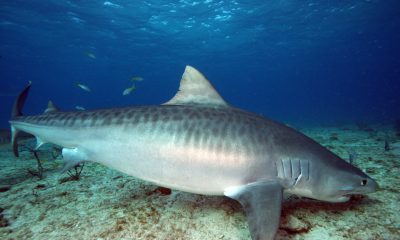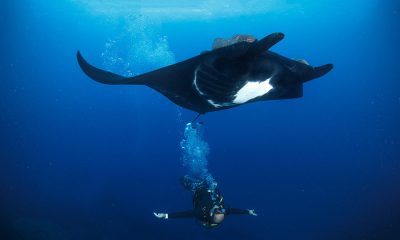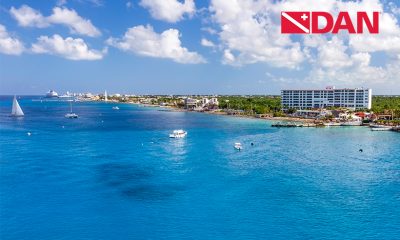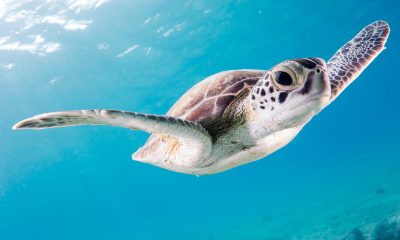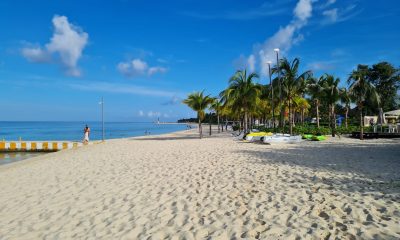News
Scratch World-class big fish encounters off your Adventure bucket-list with Pro Dive Mexico
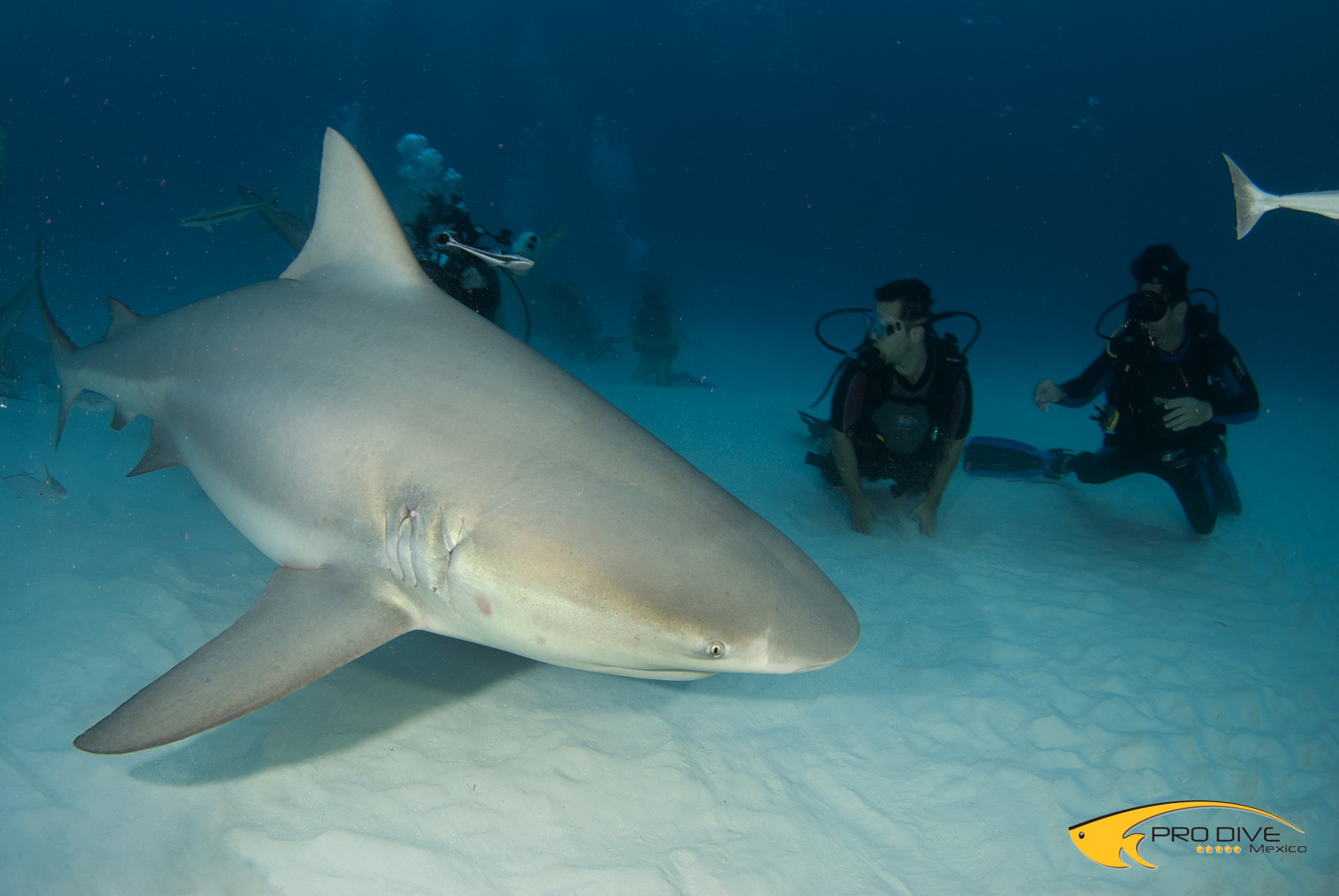
Every year during the winter months in Mexico (Dec–Mar) when the water temperature drops a little, bull sharks visit Playa del Carmen. They are solitary hunters and most of the time between 2 and 10 can be seen in the area. Pro Dive Mexico are offering you the opportunity to dive with these amazing predators.
At the same time of year you can also join Pro Dive Mexico’s Sailfish Run Safari. Witness the incredible spectacle of Sailfish hunting big schools of sardines by rounding them up into huge bait balls.
Pro Dive Mexico’s Stay & Dive Package includes:
- 5 Nights in Double Deluxe Room at Occidental Grand Xcaret 5*
> Received Conde Nast Traveller’s 2014 Readers’ Choice Award
> In lush tropical scenery, only 10 min to the heart of Playa del Carmen/Riviera Maya
- All Inclusive meal plan
- 3 days of underwater adventures including:
4 local dives > 1 of them with Bull Sharks + 1 Day Sailfish Run Safari
- Unlimited Free Nitrox
Price p.p. from US$ 1,065
OPTION 2: Package with 6 dives, including 1 with Bull Sharks + 1 Day Sailfish Run Safari at US$ 1,118 per person only
OPTION 3: Ask us for individual Stay & Dive Packages according to your preferences
Terms & Conditions
- Bull Shark dive: 25 logged dives*
- Room based on double occupancy and subject to availability
- Not eligible with other specials
- Valid for new online bookings only
Travel window:
January, 1st– 31st 2015 – overlapping periods on request
Must be booked by:
December, 20th 2014
For more information or to book, call +52 984 802 8387, email reservations@prodivemex.com or visit www.prodivemex.com.
News
Dive Worldwide Announces Bite-Back as its Charity of the Year

Over the next 12 months, specialist scuba holiday company Dive Worldwide will be supporting Bite-Back Shark & Marine Conservation with donations collected from client bookings to any one of its stunning dive destinations around the world. The independently-owned operator expects to raise £3000 for the UK charity.
Manager at Dive Worldwide, Phil North, said: “We’re especially excited to work with Bite-Back and support its intelligent, creative and results-driven campaigns to end the UK trade in shark products and prompt a change in attitudes to the ocean’s most maligned inhabitant.”
Bite-Back is running campaigns to hold the media to account on the way it reports shark news along with a brand new nationwide education programme. Last year the charity was credited for spearheading a UK ban on the import and export of shark fins.
Campaign director at Bite-Back, Graham Buckingham, said: “We’re enormously grateful to Dive Worldwide for choosing to support Bite-Back. The company’s commitment to conservation helps set it apart from other tour operators and we’re certain its clients admire and respect that policy. For us, the affiliation is huge and helps us look to the future with confidence we can deliver against key conservation programmes.”
To launch the fundraising initiative, Phil North presented Graham Buckingham with a cheque for £1,000.
Visit Dive Worldwide to discover its diverse range of international scuba adventures and visit Bite-Back to learn more about the charity’s campaigns.
MORE INFORMATION
Call Graham Buckingham on 07810 454 266 or email graham@bite-back.com
Gear News
Scubapro Free Octopus Promotion 2024

Free Octopus with every purchase of a SCUBAPRO regulator system
Just in time for the spring season, divers can save money with the FREE OCTOPUS SPRING PROMOTION! Until July 31st SCUBAPRO offers an Octopus for free
with every purchase of a regulator system!
Get a free S270 OCTOPUS with purchase of these combinations:
MK25 EVO or MK19 EVO with A700
MK25 EVO or MK19 EVO with S620Ti
MK25 EVO or MK19 EVO with D420
MK25 EVO Din mit S620Ti-X
Get a free R105 OCTOPUS with purchase of the following combinations:
MK25 EVO or MK19 EVO with G260
MK25 EVO or MK17 EVO with S600
SCUBAPRO offers a 30-year first owner warranty on all regulators, with a revision period of two years or 100 dives. All SCUBAPRO regulators are of course certified according to the new European test standard EN250-2014.
Available at participating SCUBAPRO dealers. Promotion may not be available in all regions. Find an authorized SCUBAPRO Dealer at scubapro.com.
More information available on www.scubapro.com.
-

 News3 months ago
News3 months agoHone your underwater photography skills with Alphamarine Photography at Red Sea Diving Safari in March
-

 News3 months ago
News3 months agoCapturing Critters in Lembeh Underwater Photography Workshop 2024: Event Roundup
-

 Marine Life & Conservation Blogs3 months ago
Marine Life & Conservation Blogs3 months agoCreature Feature: Swell Sharks
-

 Blogs2 months ago
Blogs2 months agoMurex Resorts: Passport to Paradise!
-

 Blogs2 months ago
Blogs2 months agoDiver Discovering Whale Skeletons Beneath Ice Judged World’s Best Underwater Photograph
-

 Marine Life & Conservation2 months ago
Marine Life & Conservation2 months agoSave the Manatee Club launches brand new webcams at Silver Springs State Park, Florida
-

 Gear Reviews3 months ago
Gear Reviews3 months agoGear Review: Oceanic+ Dive Housing for iPhone
-

 Gear Reviews2 weeks ago
Gear Reviews2 weeks agoGEAR REVIEW – Revolutionising Diving Comfort: The Sharkskin T2 Chillproof Suit





